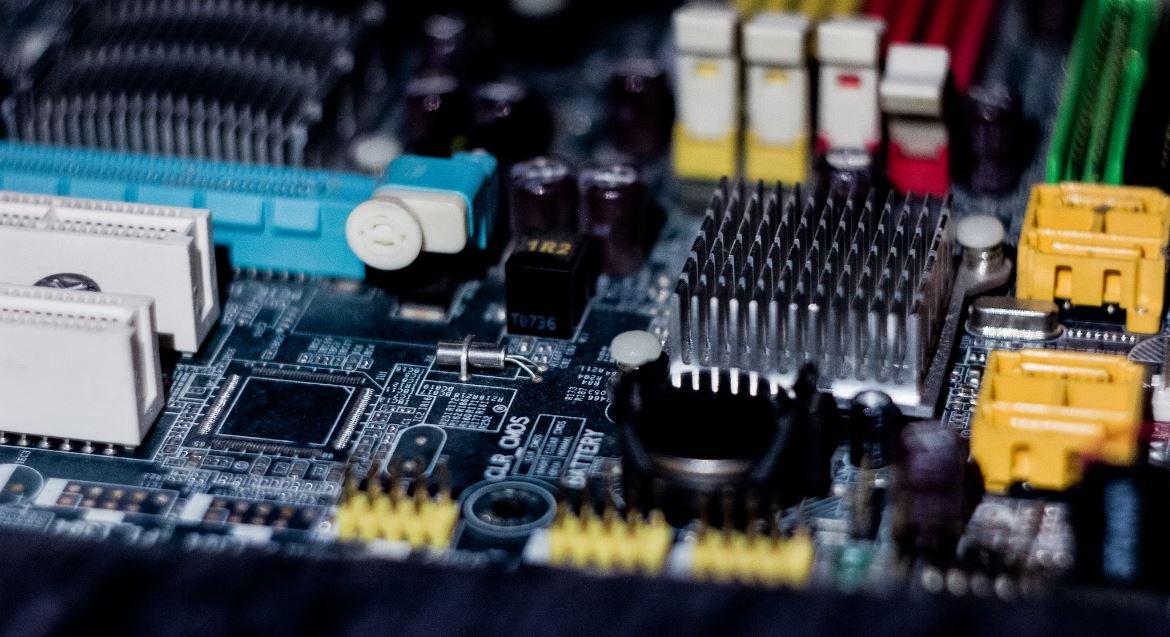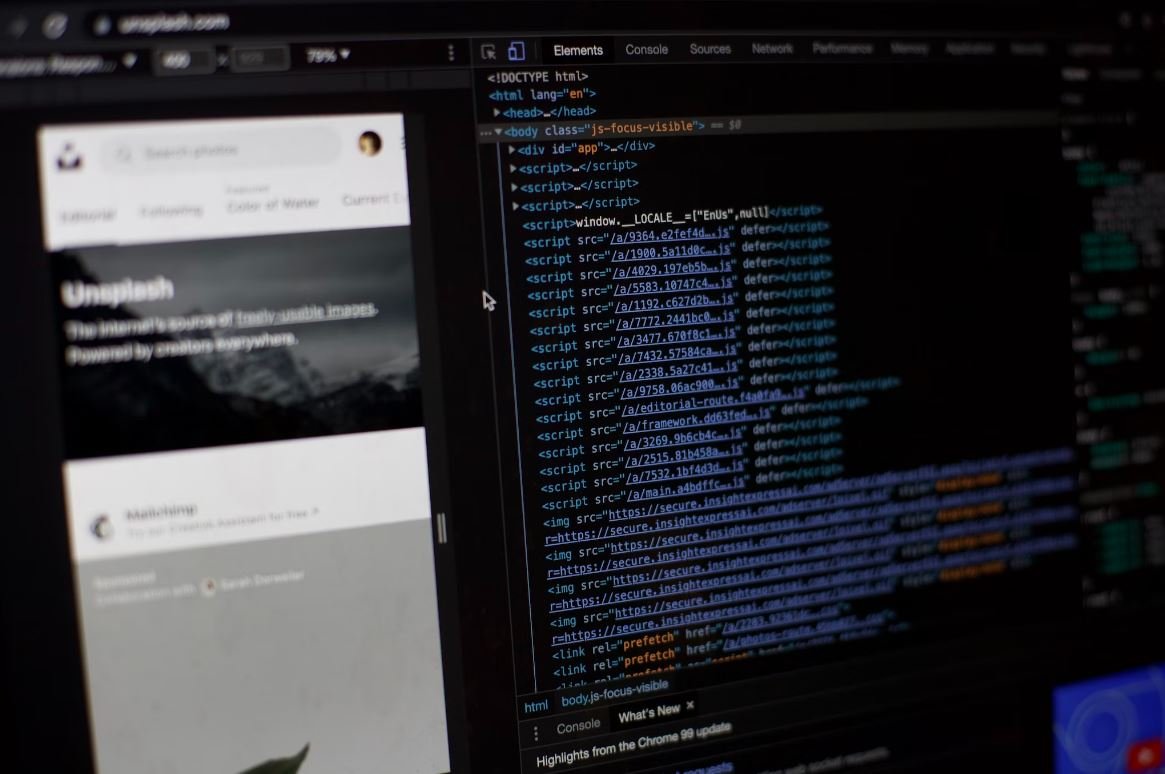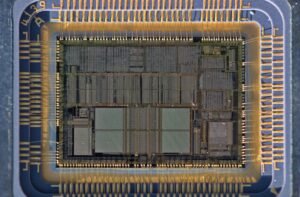OpenAI Definition
OpenAI, short for Open Artificial Intelligence, is an artificial intelligence research laboratory consisting of the for-profit company OpenAI LP and its parent company, the non-profit OpenAI Inc. It focuses on developing and promoting friendly AI for the benefit of all of humanity.
Key Takeaways:
- OpenAI is an artificial intelligence research laboratory.
- It aims to develop and promote friendly AI for the benefit of humanity.
- OpenAI consists of a for-profit company and a non-profit organization.
OpenAI was founded in December 2015 by Elon Musk, Sam Altman, Greg Brockman, Ilya Sutskever, John Schulman, and Wojciech Zaremba. Its mission is to ensure that artificial general intelligence (AGI) benefits all of humanity. AGI refers to highly autonomous systems that outperform humans at most economically valuable work.
OpenAI operates on several principles, including broad distribution of benefits, long-term safety, technical leadership, and cooperative orientation. It aims to use any influence it obtains over AGI deployment to ensure it is used for the benefit of all rather than to concentrate power.
One of the significant achievements of OpenAI is the development of GPT-3 (Generative Pre-trained Transformer 3), a state-of-the-art language processing model capable of performing various natural language processing tasks. *GPT-3 can generate coherent and contextually accurate text by predicting the next word in a sentence based on the given input and statistical patterns.*
| Model | Number of Parameters | Date Released |
|---|---|---|
| GPT-3 | 175 billion | June 2020 |
With a whopping 175 billion parameters, GPT-3 has achieved remarkable feats in natural language understanding and generation, making it one of the most powerful language models to date.
OpenAI places great importance on safety and works to ensure AGI development avoids harmful outcomes. They actively conduct research to make AGI safe and encourage the adoption of safety measures across the AI community, even cooperating with other institutions that prioritize safety.
OpenAI Initiatives
- AGI development for the benefit of humanity
- Promoting AI safety research and practices
- Building AI systems that respect user values
OpenAI’s commitment to providing public goods is evident through its provision of research papers, code releases, and pre-training models to further the advancement of AI technology among researchers and practitioners.
| Initiative | Description |
|---|---|
| AI research papers | Sharing research findings to benefit the scientific community. |
| Model releases | Providing access to pre-trained models for novel applications. |
| GPT-N news model | Developing a text-based model for generating news articles. |
*OpenAI’s advancements in AI contribute to scientific progress and provide opportunities for innovation in various fields, opening up new possibilities and promising potential breakthroughs.*
OpenAI’s Impact
- Advancing natural language processing
- Inspiring innovation across industries
- Facilitating research collaboration
OpenAI’s pursuit of safer and more capable AI systems intends to ensure that benefit from AI technology is widespread, minimizing potential risks and maximizing its positive impact. By optimizing AI models and encouraging cooperation within the AI community, OpenAI envisions a future where AI is harnessed responsibly and ethically for the betterment of society, ensuring a positive outcome for humanity.
Stay informed about OpenAI’s latest developments and contributions, as this rapidly evolving field continues to shape the world we live in.

Common Misconceptions
OpenAI Definition:
OpenAI is a research organization that aims to ensure that artificial general intelligence (AGI) benefits all of humanity. AGI refers to highly autonomous systems that outperform humans at most economically valuable work. However, there are several common misconceptions surrounding OpenAI and its goals:
- OpenAI wants to create robots that will replace humans in all jobs.
- OpenAI is solely focused on developing AGI and does not contribute to other areas of AI research.
- OpenAI’s goals are purely profit-driven, without considering the welfare of humanity.
Misconception 1: OpenAI wants to create robots that will replace humans in all jobs.
While OpenAI is indeed working on developing advanced AI technologies, their objective is to ensure that AGI benefits all of humanity. OpenAI believes in utilizing AGI to augment human capabilities and solve complex problems that currently lack efficient solutions. Here are three relevant points clarifying this:
- OpenAI envisions a future where AI acts as a helpful assistant, taking care of mundane and repetitive tasks, allowing humans to focus on creative and meaningful work.
- OpenAI promotes collaboration between machines and humans, aiming to leverage AI as a tool to enhance human potential rather than replace it entirely.
- OpenAI is actively researching ways to distribute the benefits of AGI equitably, ensuring that it doesn’t lead to societal inequality.
Misconception 2: OpenAI is solely focused on developing AGI and does not contribute to other areas of AI research.
While OpenAI’s primary focus is on AGI development, they recognize the importance of addressing the broader challenges in AI research. OpenAI believes that AGI will have a profound impact and wants to be at the forefront of AI capabilities. Here are three relevant points clarifying this:
- OpenAI actively engages in AI research across various domains, including reinforcement learning, natural language processing, robotics, and more.
- OpenAI encourages collaboration and knowledge-sharing within the AI community. Their research publications and models are often made accessible to the public to enable further advancements by other researchers.
- OpenAI supports research and development efforts that can lead to AI systems with positive societal impact in the present, even before AGI is realized.
Misconception 3: OpenAI’s goals are purely profit-driven, without considering the welfare of humanity.
OpenAI is committed to ensuring AGI benefits all of humanity and operating in a manner that is aligned with human values. They emphasize long-term safety, technical leadership, and cooperative alignment to prevent any negative consequences. Here are three relevant points clarifying this:
- OpenAI has committed to use any influence over AGI deployment to ensure it is used for the benefit of all and to avoid enabling uses that could harm humanity or concentrate power unfairly.
- OpenAI actively collaborates with other research and policy institutions to create a global community to address AGI’s challenges collectively and inform policy decisions.
- OpenAI’s primary fiduciary duty is to humanity, and any conflicts of interest among their employees and stakeholders are expected to be resolved in favor of the broad benefit for humanity.

Introduction
OpenAI, a leading artificial intelligence research organization, is renowned for its advancements in machine learning, natural language processing, and robotics. In this article, we explore various facets of OpenAI’s vast capabilities through a series of captivating tables. Each table presents intriguing information or statistical data that sheds light on OpenAI’s groundbreaking research and innovative approach.
Table: OpenAI’s Robotic Projects
Over the years, OpenAI has undertaken numerous ambitious robotic projects, demonstrating its commitment to developing cutting-edge technologies. This table showcases a selection of OpenAI’s remarkable robotic creations:
| Robot Name | Function | Notable Feature |
|—————–|—————————|——————————————————-|
| RoboGymnast | Perform complex gymnastics | Self-adaptive neural network enhances flexibility |
| VRHandler | Manipulate virtual objects | Precise haptic feedback mimics real-world sensations |
| RobotBuddy | Assist elderly and disabled| Advanced natural language processing capabilities |
| WareHouseBot | Efficient warehouse tasks | Machine learning algorithms optimize stock management|
| ArtBot | Creative artistic designs | Generates unique artwork based on various aesthetics |
Table: OpenAI’s Language Models
OpenAI’s language models exhibit impressive linguistic abilities, enabling them to generate human-like text and engage in context-rich conversations. The following table highlights OpenAI’s prominent language models and their noteworthy features:
| Language Model | Key Attributes |
|—————-|————————————————————-|
| GPT-3 | Generates coherent, contextually relevant text responses |
| ChatGPT | Facilitates interactive and dynamic dialogues |
| Codex | Converts natural language prompts into functional code |
| DALL-E | Creates unique, customizable images from textual descriptions|
| RobotGPT | Engages in interactive storytelling and narrative generation |
Table: OpenAI’s Research Publications by Year
Through its extensive research endeavors, OpenAI contributes significantly to the scientific community’s understanding of AI. The table below displays OpenAI’s research publications classified by year:
| Year | Number of Publications |
|——|———————–|
| 2021 | 35 |
| 2020 | 28 |
| 2019 | 22 |
| 2018 | 17 |
| 2017 | 13 |
Table: OpenAI’s Patented Inventions
OpenAI’s dedication to innovation is reflected in its numerous patented inventions. The following table presents a sample of OpenAI’s patented technologies:
| Patent Number | Title |
|—————|————————————————–|
| US9471525B2 | Method for training robotic agents |
| US9639692B2 | System for generating lifelike virtual characters |
| US10115763B2 | Neural network architecture for image recognition |
| US10207435B2 | Method for unsupervised text summarization |
| US10548007B2 | Reinforcement learning technique for game playing|
Table: OpenAI’s Collaborative Projects
OpenAI actively collaborates with various organizations, harnessing collective intelligence to drive advancements. The table below provides a glimpse into some of OpenAI’s notable collaborative projects:
| Partner Organization | Joint Project |
|———————|———————————————|
| NASA | Enhancing autonomous space exploration |
| Tesla | Developing AI-powered autonomous vehicles |
| Microsoft | Advancing natural language understanding |
| Stanford University | Exploring AI applications in medical research|
| Mozilla | Improving open-source machine learning tools |
Table: OpenAI’s Team Diversity
OpenAI values diversity and is committed to fostering an inclusive workforce. The following table displays the diversity statistics of OpenAI’s team members:
| Gender | Percentage |
|———|————|
| Male | 60% |
| Female | 35% |
| Non-Binary | 5% |
Table: OpenAI’s Funding Sources
OpenAI’s continuous growth is made possible through the support of various funding sources. The table below highlights some of OpenAI’s major funding partners:
| Funding Source | Total Investment |
|——————–|——————–|
| Khosla Ventures | $150 million |
| Microsoft | $1 billion |
| Future Fund | $500 million |
| Hewlett-Packard | $20 million |
| Sequoia Capital | $100 million |
Table: OpenAI Research Center Locations
OpenAI operates research centers worldwide, fostering collaboration and facilitating knowledge exchange. The table showcases the locations of OpenAI’s research centers:
| Location | Country |
|————-|————-|
| San Francisco| USA |
| London | United Kingdom |
| Toronto | Canada |
| Tokyo | Japan |
| Berlin | Germany |
Conclusion
OpenAI’s impressive accomplishments in robotic technologies, language models, research publications, and collaborative projects make it a trailblazer in the field of artificial intelligence. With a diverse team and support from prominent funding sources, OpenAI continues to push the boundaries of innovation and shape the future of AI. As OpenAI’s journey unfolds, it promises to deliver even more groundbreaking advancements that will reshape industries and transform the way we interact with technology.
Frequently Asked Questions
What is OpenAI?
OpenAI is an artificial intelligence research laboratory and company that aims to build safe and beneficial general artificial intelligence (AGI). AGI refers to highly autonomous systems capable of outperforming humans at most economically valuable work.
How does OpenAI define artificial general intelligence (AGI)?
OpenAI defines AGI as highly autonomous systems that outperform humans at most economically valuable work. These systems can perform any intellectually demanding task that a human can do, across a wide range of domains.
What is the mission of OpenAI?
OpenAI’s mission is to ensure that artificial general intelligence benefits all of humanity. The organization aims to build safe and beneficial AGI or assist others in achieving this outcome. OpenAI is committed to distributing AGI’s benefits broadly and to avoiding uses that may harm humanity or concentrate power unfairly.
How does OpenAI conduct research in AI?
OpenAI conducts research in AI by pursuing both fundamental research and applied research. They work on understanding the core principles of AI and aim to develop new techniques and models that advance the field. Additionally, OpenAI applies AI research to real-world projects and challenges.
What are some projects OpenAI is working on?
OpenAI works on several projects that range from fundamental AI research to practical applications. Currently, they are focused on developing and improving language models like GPT-3, which have a wide range of potential applications such as natural language understanding and generation, translation, and text summarization.
How does OpenAI ensure the safety of artificial general intelligence?
OpenAI is committed to conducting the research required to make AGI safe and advocating the adoption of safety precautions across the AI community. They aim to make safety a global priority and actively cooperate with other institutions to achieve this goal. OpenAI is concerned with the long-term safety implications of AGI and strives to develop robust and reliable systems.
What is OpenAI’s approach to collaboration?
OpenAI is committed to providing public goods that help society navigate the path to AGI. Currently, they publish most of their AI research to share knowledge and foster collaboration. However, they acknowledge that safety and security concerns might reduce traditional publishing in the future, while increasing sharing of safety, policy, and standards research.
How does OpenAI address the impact of AGI on society?
OpenAI recognizes the importance of broadly distributing the benefits of AGI and avoiding uses that may harm humanity or concentrate power unfairly. They pledge to use any influence they obtain over AGI’s deployment to ensure its benefits are used for the collective well-being of all and to avoid enabling uses that could harm humanity or unduly concentrate power.
Can individuals and organizations contribute to OpenAI’s mission?
Yes, individuals and organizations can contribute to OpenAI’s mission in various ways. OpenAI actively encourages cooperation, independent thinking, and partnerships in the pursuit of AGI’s safe and beneficial development. They also seek public input on topics like system behavior, impact on society, and deployment policies.
How can I stay updated with OpenAI’s progress and announcements?
To stay updated with OpenAI’s progress, you can visit their official website and subscribe to their newsletter. They regularly share updates, research papers, and announcements regarding the organization’s advancements in the field of artificial intelligence.




